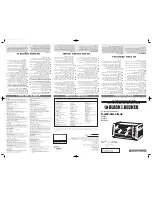
9
Initial start-up, inspection and maintenance
Further details of the individual steps
(cont.)
Cleaning the combustion chamber and heating surfaces
Thoroughly clean the combustion
chamber and heating surfaces with a
water jet.
¨
Do not use a wire brush or sharp
objects.
Scratches or other damage to
components which are in contact
with flue gases should be avoided.
Components which are in contact
with flue gases should not come
into contact with pure iron,
otherwise corrosion damage will
result. Use plastic brushes, if
necessary.
For normal cleaning, rinse the
heating surfaces with a water jet.
However, you may use cleaning
agents if you notice stubborn
residues, surface discolouration
or soot deposits.
When doing so, please observe the
following:
H
Only use solvent-free cleaning
agents. Ensure that no solvent
enters between the heat exchanger
and the thermal insulation.
H
Remove soot deposits with alkaline
agents containing surfactants (e.
Ă
g.
FauchĂ600
*1
).
H
Combustion residues may create
thin, yellow-brown surface
discolouration as well as hard
deposits, which may only become
visible after removing the soot
deposits. Use slightly acidic,
chlorine-free cleaning agents
based on phosphoric acid to
remove surface discolouration and
hard deposits (e.
Ă
g. Antox Ă75ĂE
*1
).
H
Remove loosened deposits from
the heat exchanger and thoroughly
rinse the heating surfaces and the
flue gas collector with a water jet.
¨
ĂSafety instructions
Wear goggles, protective gloves and
protective clothing, if necessary.
Cleaning agent
manufacturer's details.
*1
Manufacturer:
Hebro Chemie GmbH
Rostocker StraßeĂ40
DĆ41199ĂMönchengladbach
5692Ă480ĂGB










































